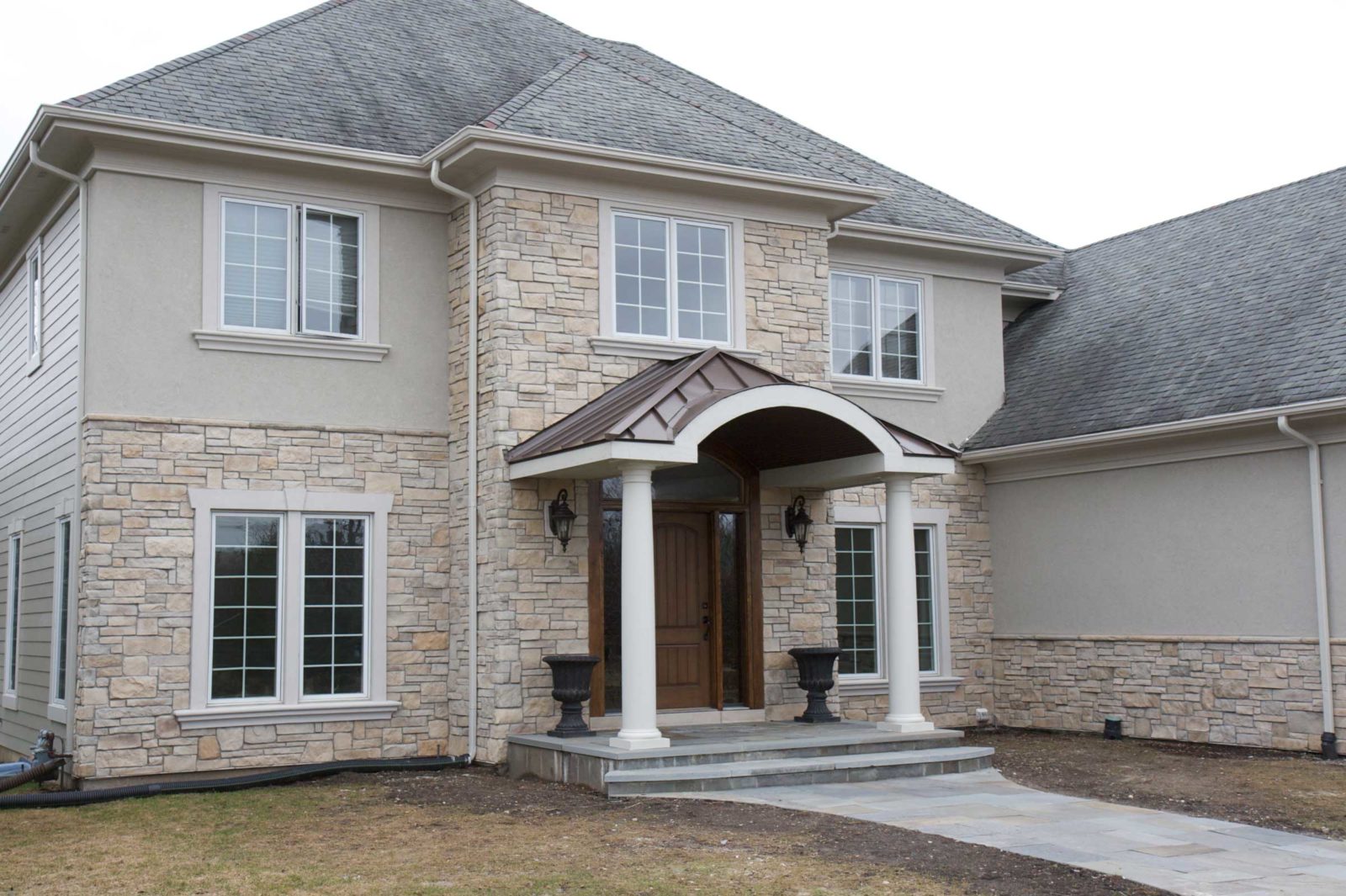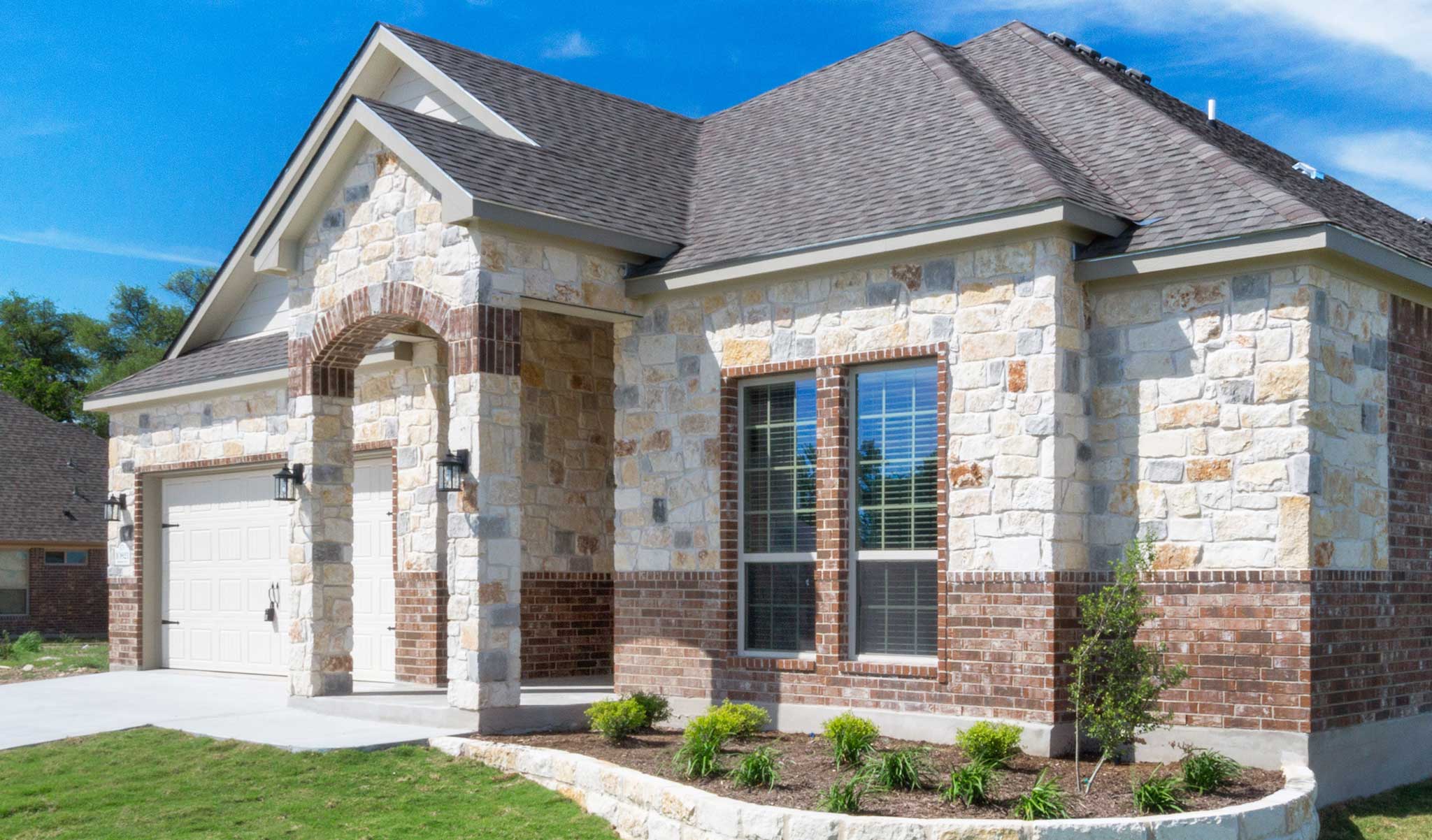Table Of Content

Some stones like onyx or gneiss based products might be better suited for interior installations only. Beyond its visual allure, cobblestone is celebrated for its durability. These natural stones can withstand heavy use and weather exposure, ensuring a long-lasting and resilient exterior. Their rough texture provides excellent traction and adds an element of safety to driveways and walkways. Choosing quartzite for your home’s exterior cladding is a decision that harmonizes modern aesthetics with exceptional durability.
Is fiber cement siding the same as stone siding?
Exterior stone veneer is also a great way to beautify outbuildings like sheds, workshops and pool houses. Stone veneer, sometimes known as “fake stone,” is created using natural aggregates and cement to simulate the look of real stone. Like the natural granite it was modeled after, it is both stunning and durable. Siding made of manufactured stone veneer, depending on the quality, can last the duration of our home itself with regular cleaning and sealing. You should be able to find this type of siding at many major retailers, as well.
Cultured Stone Siding
Vinyl is a synthetic resin material made of polyvinyl chloride and was best known for making old record discs. Like granite, gneiss is highly durable and offers stunning aesthetics for your home. In addition, it projects luxuriousness and modern living through its small or large slabs layered artistically. Onyx is quite commonly found in darker tones such as black, gray, or brown.
Durability
So, it is a great option if you’re looking to keep the same look for your home for several years. Another benefit is that you can make granite into small or large slabs. The material also strongly resists powerful winds and other harsh elements, such as heavy rainfall or extreme heat. One of the selling points of Jerusalem stone is its association with ancient building structures.
Stone Design and Installation
It is softer and more flexible, allowing shapeshifting and morphism to occur. Often used in furniture, bedding, and carpets, polyurethane is a polymers composed of organic elements brought together by a chemical process. You will typically see polyurethane take on the form of a flexible foam material. For example, they can be contained in couch cushions and mattresses but can also be used for house exteriors and siding materials. This can be a serious issue given that travertine’s selling point is its appearance. However, with proper care and maintenance, you can enjoy the lasting benefits of this type of limestone siding in the long run.
You only have to touch the foam panel to realize that it’s not real stone. A natural stone veneer panel consists of all the above two options as a 2-in-1 siding combination. The veneered panel is developed using natural stone in various formats using a panel system. The result is a seamless puzzle-like siding that provides homeowners with real stone options with the same advantages of durability and visual appeal.
Its smooth, glossy surface and subtle sparkle add an element of elegance and refinement to your home’s façade. Opting for slate as the exterior cladding for your house is a choice that blends rustic charm with exceptional durability. Slate is probably most often thought of as a roofing product but lots of great slate products exist for cladding applications as well.

Limestone
This means that you should be able to save a bit of money on hiring professionals to do this for you. You will also likely need to turn to some type of specialty dealer in order to get the stone material that you are looking for. The other options that are represented on this list will be available at major retailers. The beauty of stone is incomparable and more durable than wood siding which is porous and can rot over time. Natural stone is built to stand the test of time and can last indefinitely. Being known for its unique flower-like patterns, travertine works as an excellent siding for hot climates.
Stone Siding Exterior Ideas
Its natural grain and texture invokes a rustic vibe and creates an inviting, organic look that adds character and charm to any home. Installing a retaining wall can cost $20 to $50 per square foot, depending on the type of material and other factors.
The stone accents in this design play perfectly into the nature-inspired, rustic vibe of this home. Wood accents and an earth-tone shade on the siding complement the stone featured throughout. Widely popular in sunny climates, sandstone has a reflective quality which creates a unique appearance. Sandstone is also available in a wide variety of colors ranging from neutrals to bold hues, including but not limited to white, orange, yellow, pink, and purple. While this upfront expense is high, it includes an incomparable return on investment when considering future resale value and energy efficiency.
Manufactured stones, on the other hand, are when several aspects of natural stones are improved and empowered to be a better material. Here are the advantages and disadvantages you can weigh to help you decide. If installed incorrectly, they can cause mold, rot, or fall off easily. These factors, combined with the shortened longevity of synthetic stone products, make them a tricky choice for your home’s exterior, potentially lowering your home’s resale value.
Stone House / Dake Architectural Design - ArchDaily
Stone House / Dake Architectural Design.
Posted: Wed, 22 Apr 2020 07:00:00 GMT [source]
Quarry Mill has 400+ premium real thin stone veneer options quarried across the USA and the world. This type of siding is made from a thin layer of real stone mounted on top of a substrate. This option is probably closest to having solid stone exteriors at half the price. Made from cement, aggregates, and pigments, then cast into molds to replicate natural stone textures, this type of siding is 30-60% cheaper than solid stone siding.
Check out the following advantages you can get with using travertine masonry siding. The major downside of limestone though is that since it’s extremely porous, it is highly susceptible to stains and scratches. Be careful of these kinds of damages and make sure you properly care for them so that they can last for many years. To help you with this task, here are some of the types of natural masonry sidings you can consider and the benefits you can get from them. We cover additional pros and cons of masonry veneer siding in our faux siding section below. Some consider the addition of this element as a throwback to the time before the rise of the technological revolution.
Another common name for manufactured stone siding is cultured stone siding. If you want to have the most legitimate stone siding possible for your home, then you will likely want to consider buying solid stone siding. There are some issues with this type of siding that keep it from being a truly practical choice for everyone (most notably the cost). Being among the hardest real stone sidings out there, granite grants homes an excellent barrier against a wide variety of weather conditions. Additionally, it tends to have a speckled and swirled grainy appearance.
However, if you seek a cheaper alternative that more or less looks the same, then you may want to try faux stone panel siding. Remember, you are not stuck with the house siding that your home came with. By exploring your options in line with your budget and needs, you can make big changes to your home’s appearance for the better.

No comments:
Post a Comment